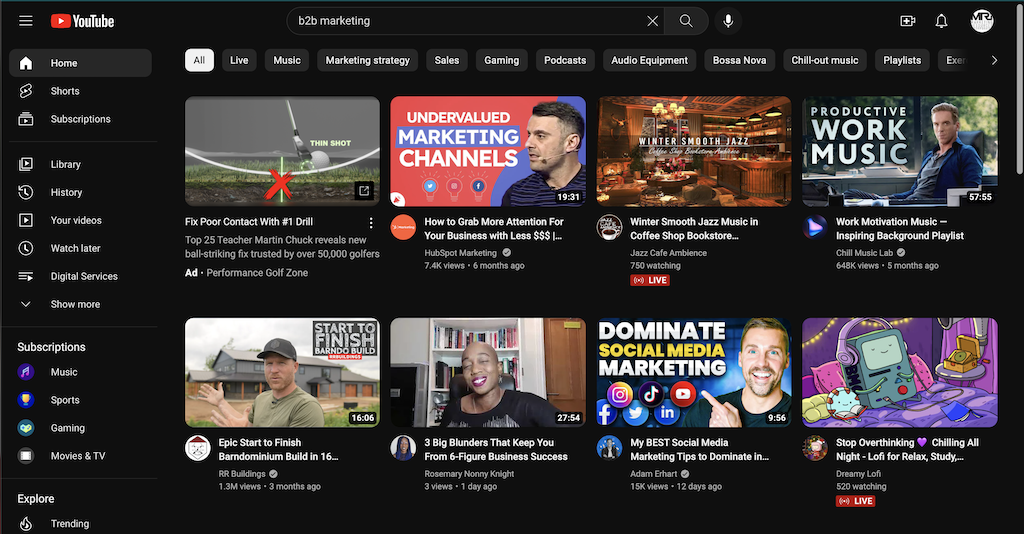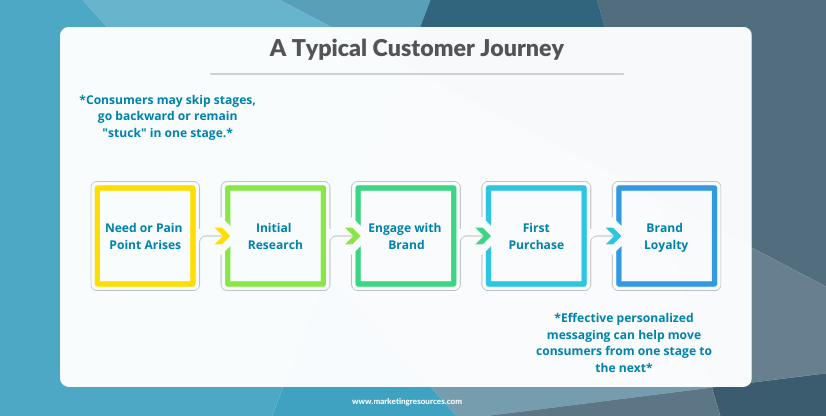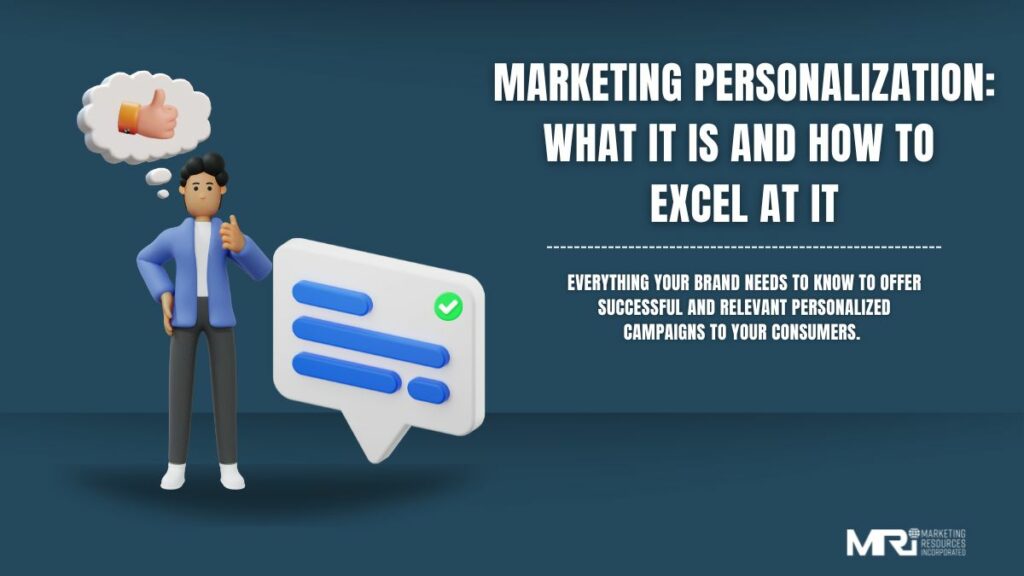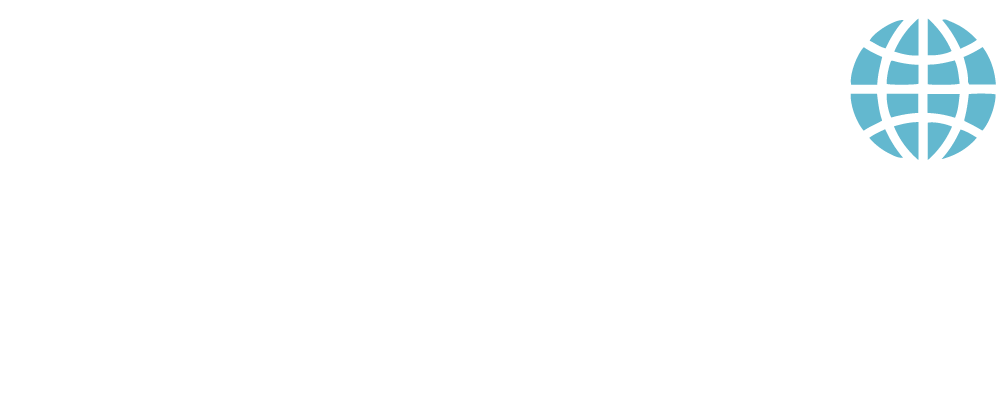Open up your email inbox and take a look at the subject lines. How many of them call you out by name? Almost as if you and whoever sent it are old friends, or at least, on a first-name basis. But, how many of those senders do you actually know? How many have you ever even spoken to?
Somewhere, some marketer spent their time crafting the very emails and subject lines you’re looking at right now. Surely, they put some time and effort into researching email best practices. On top of that, they almost certainly read somewhere on the internet (in nearly any article about effective marketing), that adding personalization to their marketing campaigns will increase their effectiveness.
We’ve all seen it. But, what exactly is personalization in marketing? And what separates “good” personalization from “ineffective” personalization (or just down-right “bad” personalization)?
What is Personalization in Marketing?
Personalization has made its rounds in the marketing world for decades now. In that time, it’s evolved to keep up with the latest trends and best practices for marketing and sales. Not only that, but it’s also a concept or strategy that’s been studied and re-studied by marketing professionals and educators for years.
Because of that, you’ll likely find about a dozen different definitions for personalization. Don’t worry, our team has combed through most of them, and with a little help from our experts, we’re sharing everything you need to know about personalization in marketing.
To begin, in the context of marketing and sales, “personalization” is the ability of a brand or agency to offer unique, contextual experiences to its audience. Tailored on a one-to-one basis, personalization in marketing takes an individual’s wants and needs into account and makes suggestions based on them.
On the other hand, consumers define personalization in marketing as well. Consumers define personalization as “positive experiences of being made to feel special.” Hold on to that definition. If you only take away one thing from this blog, it’s that consumers want to be made to feel special.
How Has Personalization in Marketing Changed Over the Years?
Remember just a few paragraphs above when we mentioned that personalization in marketing has been around for decades? We weren’t kidding.
Personalizing marketing campaigns really took off in the late 1990s. Obviously, since then, marketing as a whole has changed quite a bit. With the advent of new technologies and channels, marketing in general, including marketing personalization, has evolved.
For example, in the early days of implementing personalized campaigns, physical mailers reigned supreme to email marketing, nobody had a social media account, and the internet had one speed: slow.
For the first time, marketers incorporated personalization into their marketing campaigns. Equipped with a new tool, email, brands were finally able to craft specific messaging to individuals. With just a little bit of code, and eventually, with just a few clicks, marketers could easily add an email recipient’s personal information into the body of their emails at scale, making it seem like this message was written specifically for them.
“Hi, {First_Name}” turned into “Hi, Kelly” and like magic, consumers bought in. Since then, as our tools have gotten more complex, marketers have had the opportunity to implement personalization in more and more ways. Assuming, of course, they invest both the time and the money to do so effectively.
The Future of Personalized Marketing
Looking ahead, the future isn’t the brightest for personalization. At least, not the type of personalized campaigns we’re used to seeing most often. That “magical” “Hi, {First_Name}” has lost its luster over the years, and, according to Forbes, has rarely gone beyond that. Several years later, consumers expect more from the brands they choose to engage with.
Though marketers have the opportunity to thoughtfully and effectively craft unique and personalized campaigns, it is often difficult to do at scale, or they lack the tools or data they need to do so.
Despite this, the benefits of personalizing your marketing efforts and clear. When done correctly, personalization activates your audience from “potential customer” to “engaged purchaser” and offers your brand a true competitive advantage in the marketplace.
Why Personalizing Your Campaigns Matters
First and foremost, 71% of consumers expect personalized experiences from the brands they engage with.
If that stat alone doesn’t convince you– we’ve got plenty more.
Personalization helps you retain current customers and convert new ones. It drives campaign performance and helps your brand not only meet more consumer needs, but increases the likelihood that your consumers will convert increasing consumer loyalty and revenue all at once.
However you look at it, investing both the time and effort it takes to craft an engaging personalized marketing campaign pays dividends. Your consumers already expect you to offer them relevant suggestions based on their personal preferences, now is the time to learn how to do so effectively.
How to Implement a Strategic Personalization Strategy
First of all, what does a successful strategic personalization strategy look like? Well, it’s different for every company and, of course, every consumer. But, to be general, a successful application would send a consumer the right messaging, at the right time, across the right channel. Not so hard, right?
Look at YouTube, for example (and while you’re there, feel free to check our channel out). As you watch videos and engage with them, YouTube gets a more accurate picture of your likes and dislikes. Their “algorithm” suggests even more videos for you to explore. Before you know it, you’ve fallen down the infamous “YouTube Rabbit Hole,” watching videos that might not even have anything to do with what initially brought you to the site. That, ladies and gentlemen, is a very effective personalized marketing strategy.

While we can’t guarantee that our tips will place you with the likes of a media giant like YouTube, we do know that our suggestions outline a clear and effective process for implementing your own personalized campaigns. Below, we’ve compiled a list of tips and suggestions based on over 30 years of experience executing world-class marketing campaigns for some of the most recognizable CPG, QSR, and financial services brands, and the latest research available on personalized marketing best practices.
Identify How You’ll Collect Consumer Data
Before you can press send on your next campagin, you first need to learn how to personalize your campaigns. Understanding your consumer behavior is critical to executing a successful campaign. How can you make relevant suggestions to your target market if you don’t first know what’s relevant to them?
Through the collection of consumer data, brands can glean important insights into what their consumers want, need, and expect. However, your customer data is only as valuable as you make it. You can have dozens of spreadsheets full of information about your contact lists, but if you don’t put that data to work for your brand, it’s useless. Understanding consumer behavior and the psychology of brand loyalty are critical to launching a successful personalized marketing campaign. We recommend exploring both of those guides for a strong foundational understanding of consumer behavior.
Now that you understand the importance of collecting consumer data, and what to do with it once you have it, you must now determine how you’ll collect it. Here, there are nearly limitless opportunities. Of course, your brand can simply ask consumers for their input, but consider sweetening the deal and rewarding them for the information they share with you.
A promotional campaign makes for an excellent tool to not only collect valuable consumer data, but also encourages your consumers to actually want to share that data with your brand. A win-win for all.
As part of any successful promotional marketing campaign, like a sweepstakes or a contest, consumers exchange their info in order for a chance to receive a prize or reward. With our help, a carefully crafted campaign entry form asks the right questions in the right way in order to collect the valuable consumer data your brand needs to anticipate your consumers’ needs.
Take a Close Look At Your Customer Journey
As consumers navigate through your brand’s customer journey, their needs and expectations evolve with them. Successful brands recognize this and adapt their messaging and strategies to best reflect the exact part of the journey that any particular customer is currently in.
For example, consider your freshest of “fresh leads.” Perhaps they just recently filled out a contact form on your website, just added something to their cart on your e-commerce site, or maybe they just ate at your fast food restaurant for the very first time. Their needs, and therefore the messaging they receive, are dramatically different than those of your brand loyal evangelists.

Every step of the way, as a consumer engages with your brand, you should track their experience. What website pages do they visit? What problems do they have and how can your brand solve them? What questions do they ask? Any sort of insight that informs you what they expect and need is helpful here.
Thankfully, over some time, as consumers engage with your brand multiple times, it becomes easier to anticipate their needs and meet them. The longer you know someone, the better you know them, after all. Each touchpoint with your brand throughout your customer journey represents an opportunity to learn more about your consumers, all to help you achieve your ultimate goal of launching a truly personalized marketing campaign.
Implement Segmentation
The next step in the process of creating your brand’s personalized marketing campaign is to create marketing segmentation. Hopefully, your marketing teams utilizes some sort of CRM tool to help automate this process, but, rest assured, you can accomplish the same thing with a simple spreadsheet.
Customer segmentation is simply the process of separating (or, “segmenting”) your audience based on certain criteria or characteristics. For example, you may choose to separate your audience based on their location, their age, the products they purchase, the content they view on your site, whether or not they engage with your brand on social media, and much more.
Identify which segments make the most for your brand. We suggest a mix of the following:
- Customer Lifecycle Stage– Where they are in your customer journey
- Proposed Solution– The top product(s) or service(s) for this customer segment
- Level of Engagement– Are they frequent purchasers? Or, has it been a while since they’ve interacted with or bought something from your brand?
Segmentation allows your brand to provide relevant information to the right consumers at the right time. By separating your audience as granularly as possible, your brand can offer with pinpoint accuracy a product or service to your customers right when they need it most, increasing the likelihood they’ll convert.
On the other hand, a lack of accurate segmentation leads to the dreaded “spray and pray” technique of marketing. This includes sending one broad message to one large audience, regardless of whether or not they actually need that message. Not only is this an ineffective tactic, it can also annoy consumers and turn them away from your brand! Recent data shows 62% of consumers say a brand will lose their loyalty if they deliver an unpersonalized experience, up nearly 20% from 2021.
Execute Your Personalized Campaign
Finally. With an understanding of what your audience wants, and how and when to deliver it to them, your brand can begin executing an effective personalized marketing campaign. With proper segmentation in place, the last step is simply to craft the messaging and creative your brand wants to communicate.
A successful campaign plans for what your consumers need, want, and expect. In some cases, the most successful campaigns make these suggestions before consumers even realize they want them. Throughout this last step, you should continually refine your campaign, optimizing it every step of the way with each new insight gathered.
For example, If over time you notice that consumers who haven’t engaged with your brand in 3 months come back and reconvert when you offer them an exclusive 15% discount, continue to offer that discount.
Test everything. The more information you collect throughout the campaign, the more knowledge you’ll have when developing your next one.
The Era of Personalization Reigns
With the increasingly crowded marketplace, any and every differentiator available to your brand is a valuable one. As you can see, personalization offers brands an opportunity to drive revenue, increase positive associations with their brand, and meet their consumers’ needs. With an effective strategy in place, your brand can stand out and above your competitors.
No matter where you are in your campaign development, our team of promotional marketing experts is here to help. Whether you’re looking to collect the valuable consumer data your brand needs, or want to foster greater consumer engagement (or both) contact us to start executing your personalized marketing campaigns today.






